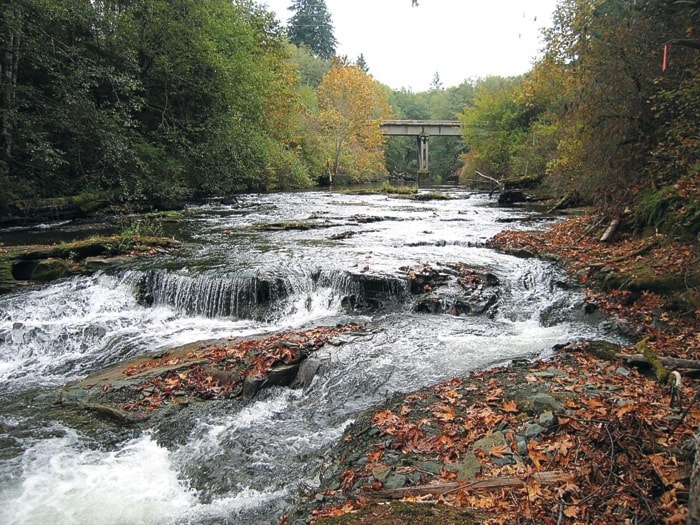It’s common this time of year to see anglers lined along the banks of the Campbell River fishing for pink salmon.
And with the Pinks for the Pier partnership between the City of Campbell River, First Nations, and Quinsam River Hatchery, there is also abundant pink salmon fishing right off the Discovery Pier.
But it wasn’t long ago that pink salmon were seriously depleted.
“By the 1970s, a combination of habitat changes and commercial fishing had significantly reduced the abundance of pink salmon throughout the Strait of Georgia,” said Dr. Brian Riddell, president and CEO of the Pacific Salmon Foundation. “The federal government’s major investment in hatcheries starting in the 1970s and Quinsam River Hatchery’s local work over the years made it possible to regenerate this important local run of pink salmon.”
Riddell’s Vancouver-based foundation has been spearheading an effort to raise the public’s appreciation of pink salmon since he joined the non-profit in 2009. Riddell said the often overlooked pink salmon is the most abundant of the seven species of Pacific salmon, and is second only to coho salmon in geographic distribution throughout British Columbia. He added that pink salmon is also considered the healthiest type of salmon to eat because its short two-year lifespan gives it less time to collect potentially harmful chemicals.
This Saturday, Riddell and the Pacific Salmon Foundation team will be on-hand for the inaugural Campbell River Pink Salmon Festival, which will run from Noon to 4 p.m. at Robert Ostler Park. Organized by Campbell River resident Larry E. Stefanyk.
But getting to a moment of celebration has taken more than 30 years of concerted effort by the Quinsam River Hatchery staff working hand in glove with “streamkeeping” volunteers, businesses, First Nations, and the local and provincial governments to bring the pinks back.
The success has had far-reaching positive ramifications beyond Campbell River. Anglers fishing for pink salmon all along the east coast of Vancouver Island are likely reeling in fish from the Quinsam River Hatchery. That’s because the natural pink run has improved so dramatically here that the Quinsam River Hatchery can now distribute extra pink salmon eggs to other watersheds.
The local effort to restore pinks took a major step forward in 2005 with excavation work that created fish passage channels in the upper reaches of the Quinsam River, a tributary of the Campbell River. Creating the channels was particularly important because pink salmon are the first salmon to return to their native rivers to spawn, typically in August and early September. Water flows are often lower at that time of year due to limited summer rainfall, resulting in more barriers that keep salmon from returning to upper-river spawning grounds.
Now, pink salmon can migrate an additional 14 kilometres up the Quinsam River where they spawn and die. Their carcasses then become an all-you-can-eat buffet for more than 130 other species of animals and plants, as well as nutrients for next year’s growth.
The effort, which has worked exactly as planners hoped, involved the Quinsam River Hatchery, Pacific Salmon Foundation, Haig-Brown Kingfisher Creek Society, BC Hydro and the provincial government.
Following the creation of the fish passage channels, upwards of 12 million non-hatchery pink salmon fry migrate out of the Quinsam River compared to one million prior to the work.
